As a fan of manual processes that have since become more automated over the span of history, I couldn’t help pondering the similarities between two of my main interests; quality coffee and film photography. I know I’m not alone in sharing these hobbies so with this crowd in mind, I thought I’d wax poetic on the similarities and relation between manually brewing coffee and shooting/self-developing film.
To preface, I have shot film for around three years and have had an “above average” appreciation of quality coffee for maybe the last ten years or so. Just like there are many ways to skin a cat as they say, such is true for brewing coffee and developing film.
Film Stocks vs. Your Coffee Selection
Regarding film stock, I am going to focus on black and white film as that’s my preference. When selecting a black and white film stock to shoot with, you have several options; you can go with something cheaper like Fomapan or Kentmere, something more commonplace but trusted like Kodak Tri-X or Ilford HP5, a more modern film emulsion like the Ilford Delta series, something more experimental like Rollei infrared, or even a c-41 processed film like Ilford XP2 (the list goes on)… These are all great film emulsions but come down to personal preference and other than how/what you shoot, are priced differently based on their level of quality/features. The same goes for what developer you choose; different choices yield different results and each has its own pros and cons.
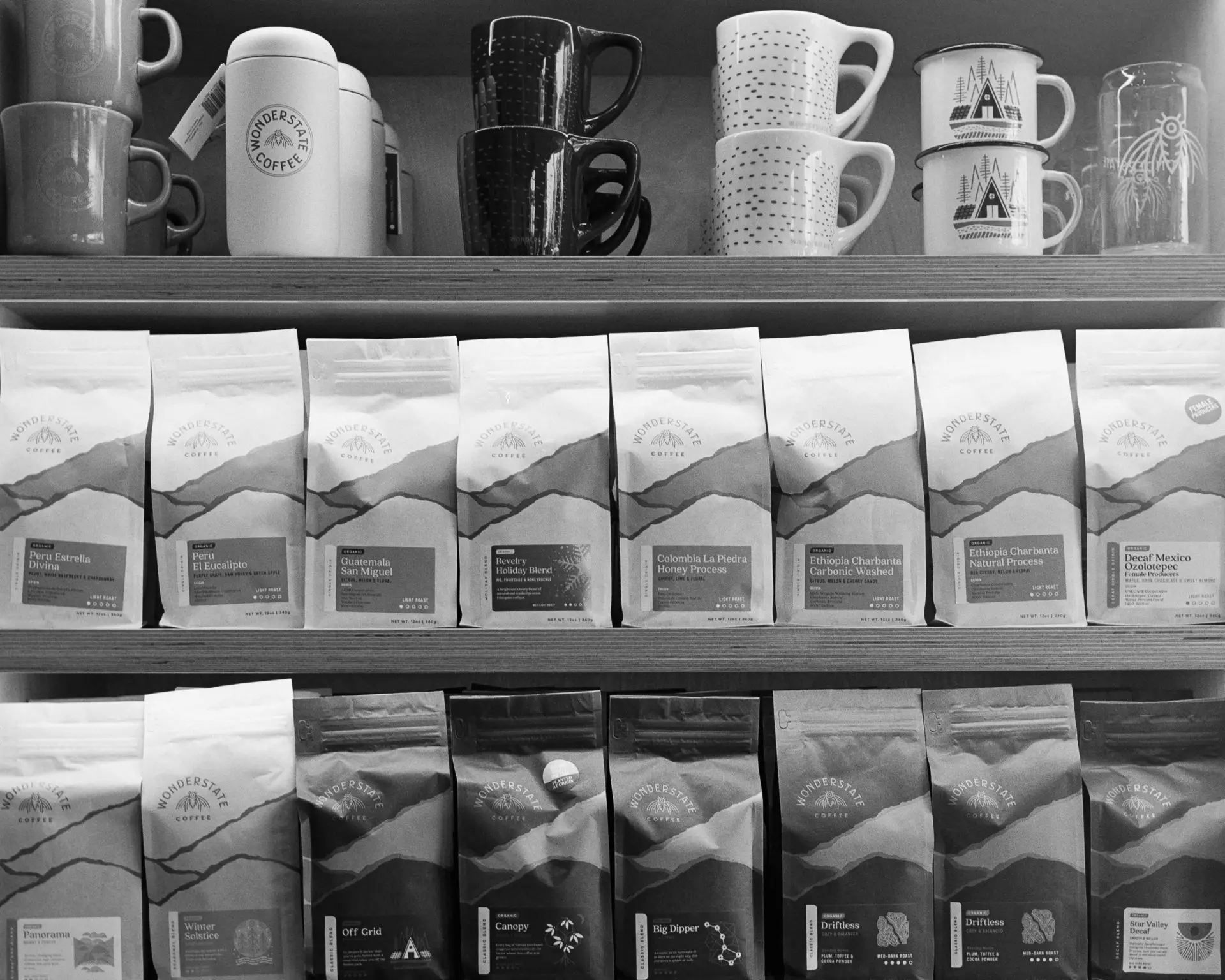
Similar to film emulsions, coffee bean varieties have different levels of quality. If pre-ground Folgers is on the very bottom of the coffee quality pyramid, next up would be Starbucks (or some equivalent) level of coffee beans. From there, you jump to what is called the third wave, which includes the more artisanal coffee options.
I live in a small rural town that happens to house one of the top-tier coffee roasters in the US so I won’t lie in saying I seldom stray from the good stuff unless I am traveling and need the creature comforts of a Starbucks. If we are just talking about third-wave coffee, we can break it down even further. Catering to a variety of demographics, you have what are called blends and for more experienced coffee connoisseurs, single-origin coffees. Blends are produced by coffee roasters as a selection of more accessible coffees that will appeal to a wider variety of palettes. You will generally find a roaster has different blends described by their roast levels as well as flavor profiles. A blend is made by combining multiple single-origin coffees and if a blend is described as having notes of dark chocolate and stone fruit, just chalk that up to the film equivalent of a film being described as medium contrast and with high granularity, etc.
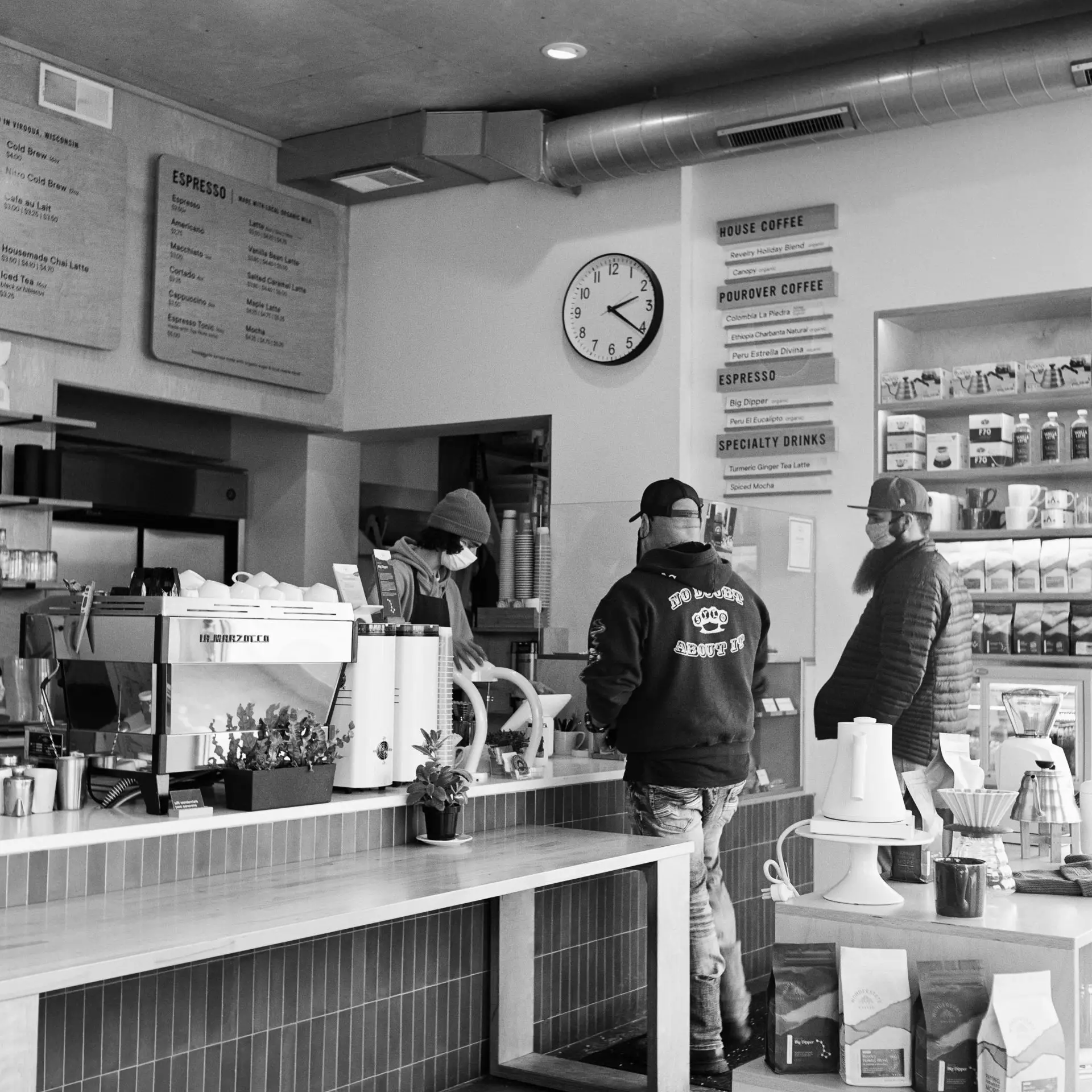
At my town’s cafe, on drip you can usually order a lighter or a darker coffee option, otherwise, you will be ordering a pour-over of a single-origin coffee that is available if you want something more intriguing/specific. As for single-origin coffee beans in general, these are for someone that really knows coffee and exactly what coffee varieties they like or someone that just wants to experiment. From Rwanda to Nicaragua to Ethiopia and everywhere in between, single-origin coffees are almost always seasonal throughout the year the way other crops are. To make things even more complex, there are different washing processes for the coffee beans after they have been harvested from their respective farms that change the flavor profiles and taste complexities even further. Most blends, while usually available all year long, will sometimes vary taste-wise throughout the year as different seasonal single-origin components are switched out as replacements based on availability.
Such is true with more unique or limited edition film stocks as well; think of any of the options from Film Photography Project or Lomography. Now that we have discussed choosing our beans (or film stock), let’s dive into the process.
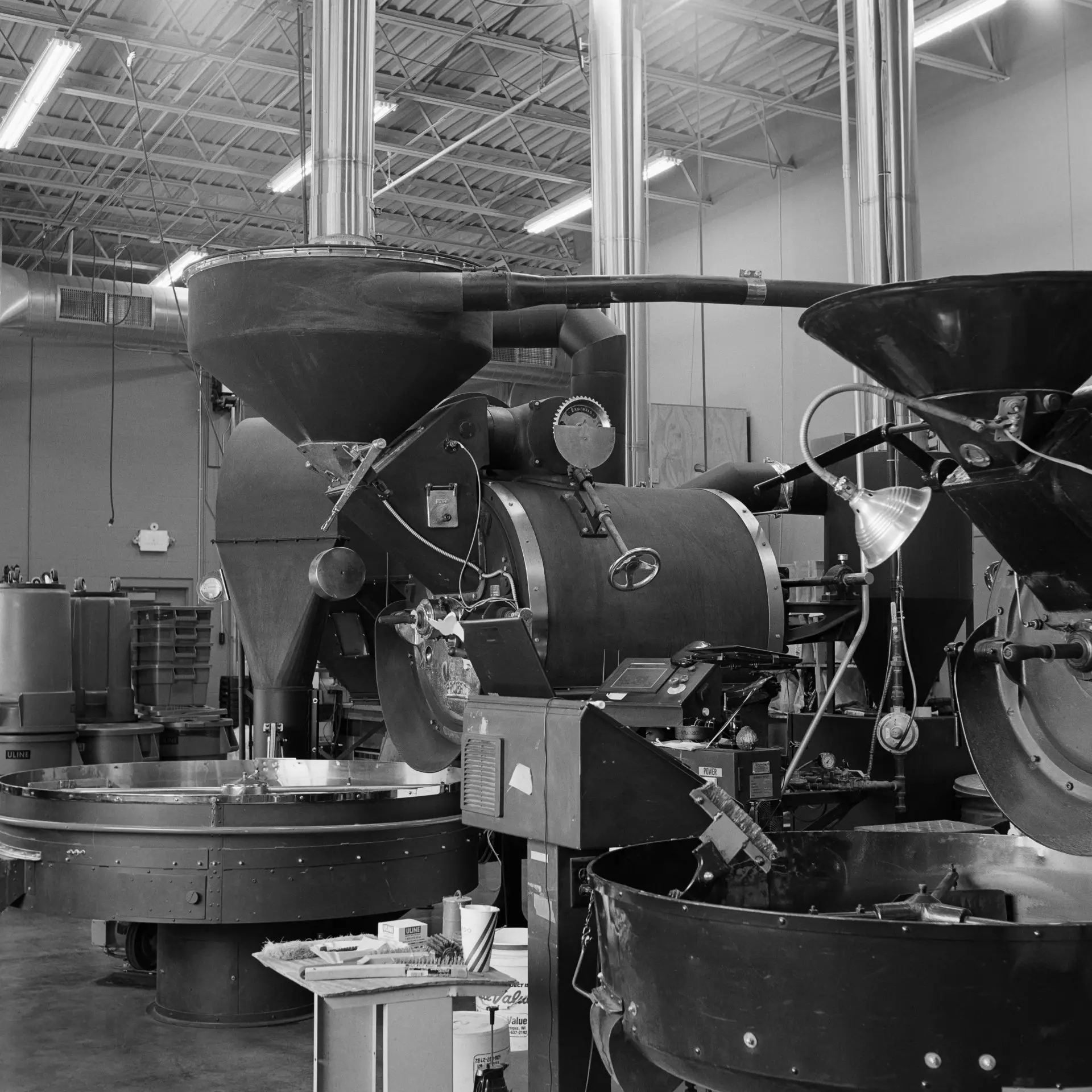
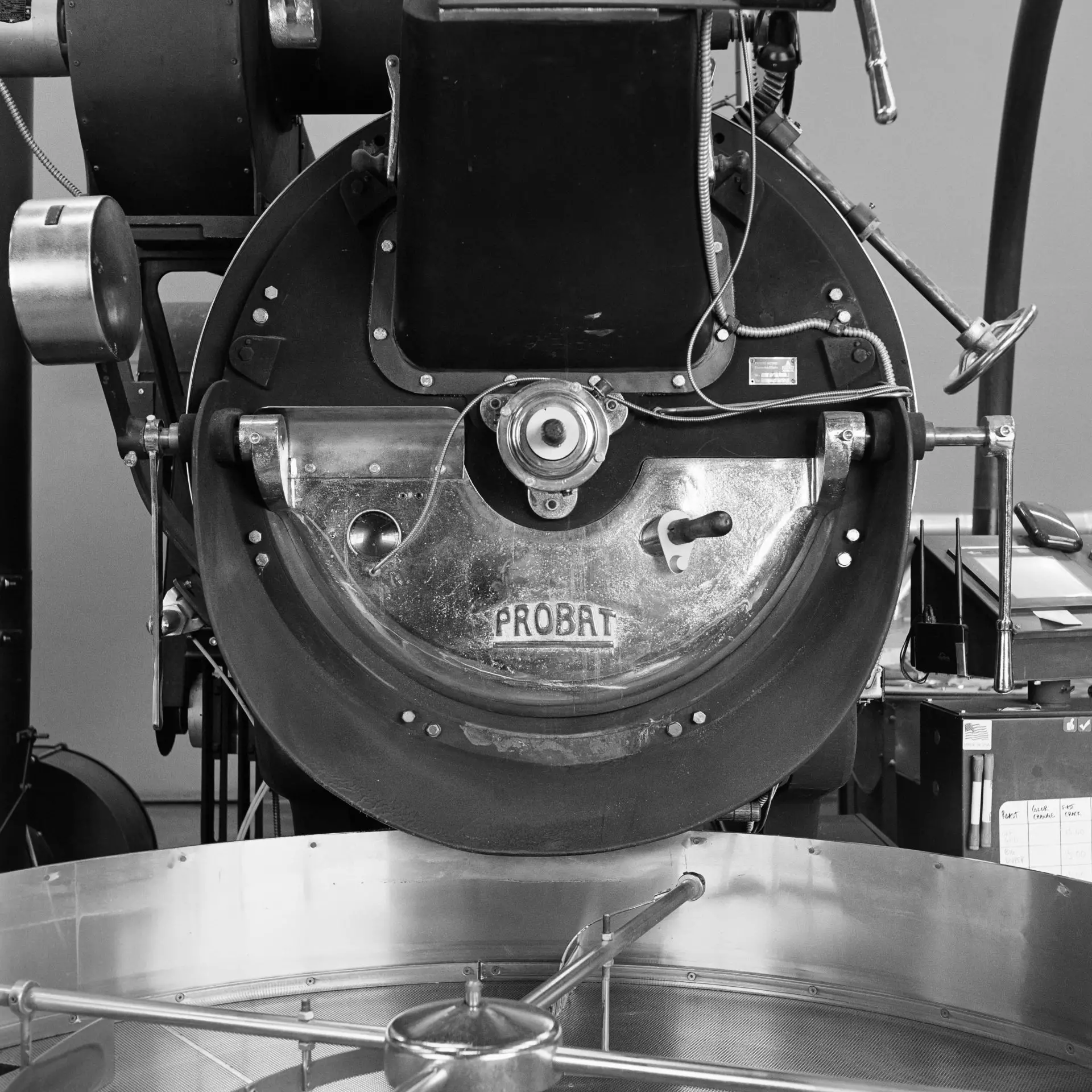
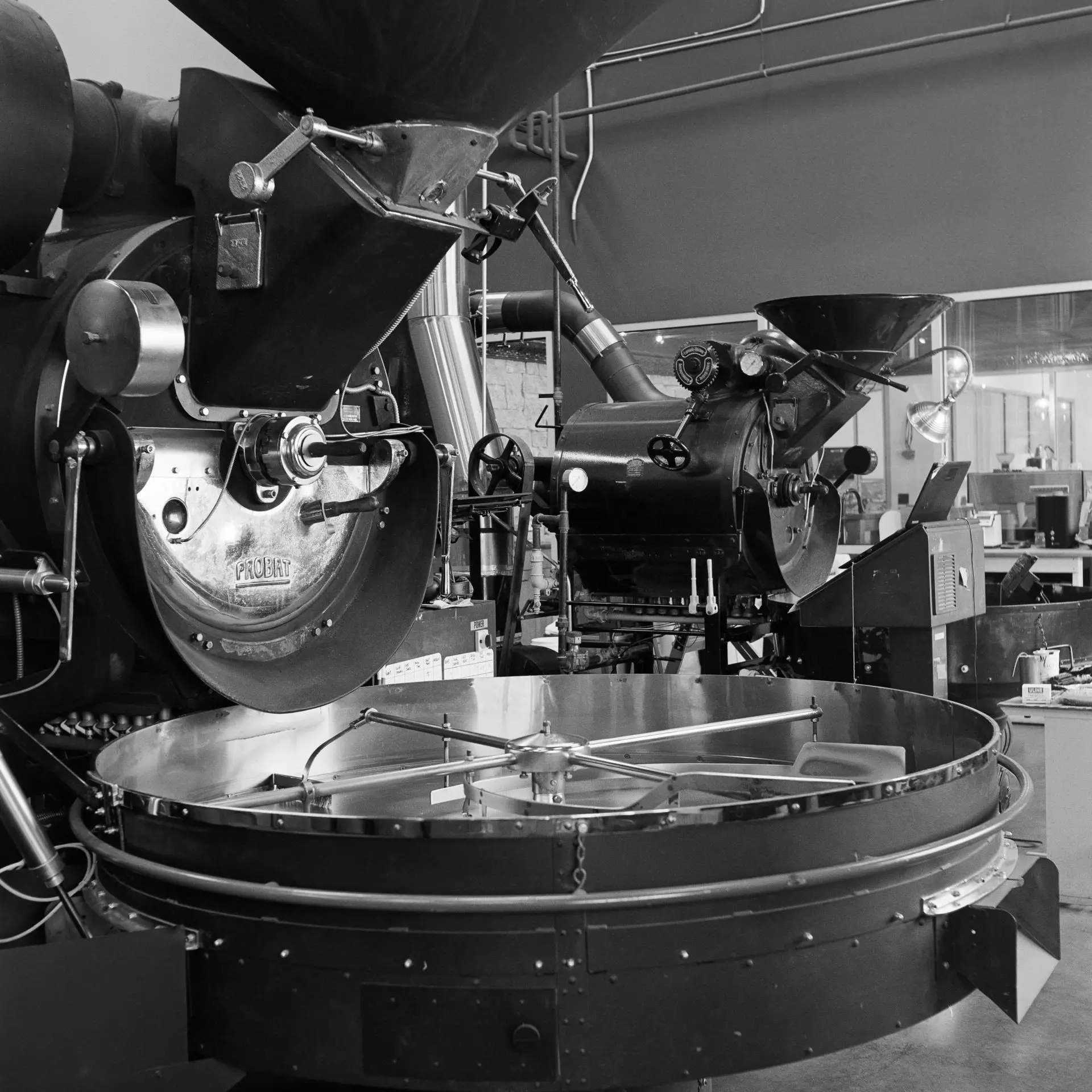
Developing Film vs. Brewing Coffee
Very similar to developing film and choosing a type of developer are the copious ways we can choose to brew our coffee. While there are a lot of variables here as far as methods for brewing, I am going to skip over crowd favorites like the Chemex/Aeropress (in favor of what I use) and focus on pour-overs aka percolation style brewing with a Kalita Wave and immersion-style brewing with a French Press.
Firstly, the Pour-Over is my daily driver. Whether I am brewing hot or iced coffee for my wife and I in the mornings, it’s a tried and true process once you have mastered some of the basic steps involved. While there is always experimentation necessary, once you pick a roaster you like, it’s fairly easy to dial in your pour-over to get delicious and consistent results. In this section, I would like to compare the humble pour-over to your standard development scheme for a dedicated film emulsion.
In the way that you modify coffee grind size, water temperature, and timing to adjust the taste of your brew, the same can be said for developing your film via timing (push or pull processing your film), what temperature you develop it at, as well as your agitation scheme. Similar to expired film, extra care and consideration are given in the same way as if you were brewing with some coffee beans that were a bit out of their freshness date.
Techniques are involved with brewing your cup such as pouring in concentric circles, letting your coffee bloom initially, or pre-wetting your coffee filter (to avoid a papery taste) just as we might pre-rinse our film to create an even base for development across our roll. One other thing for all styles of coffee brewing to consider is your ratio of coffee:water, just as we do the same for our film developer:water; it all depends on the results you are after.
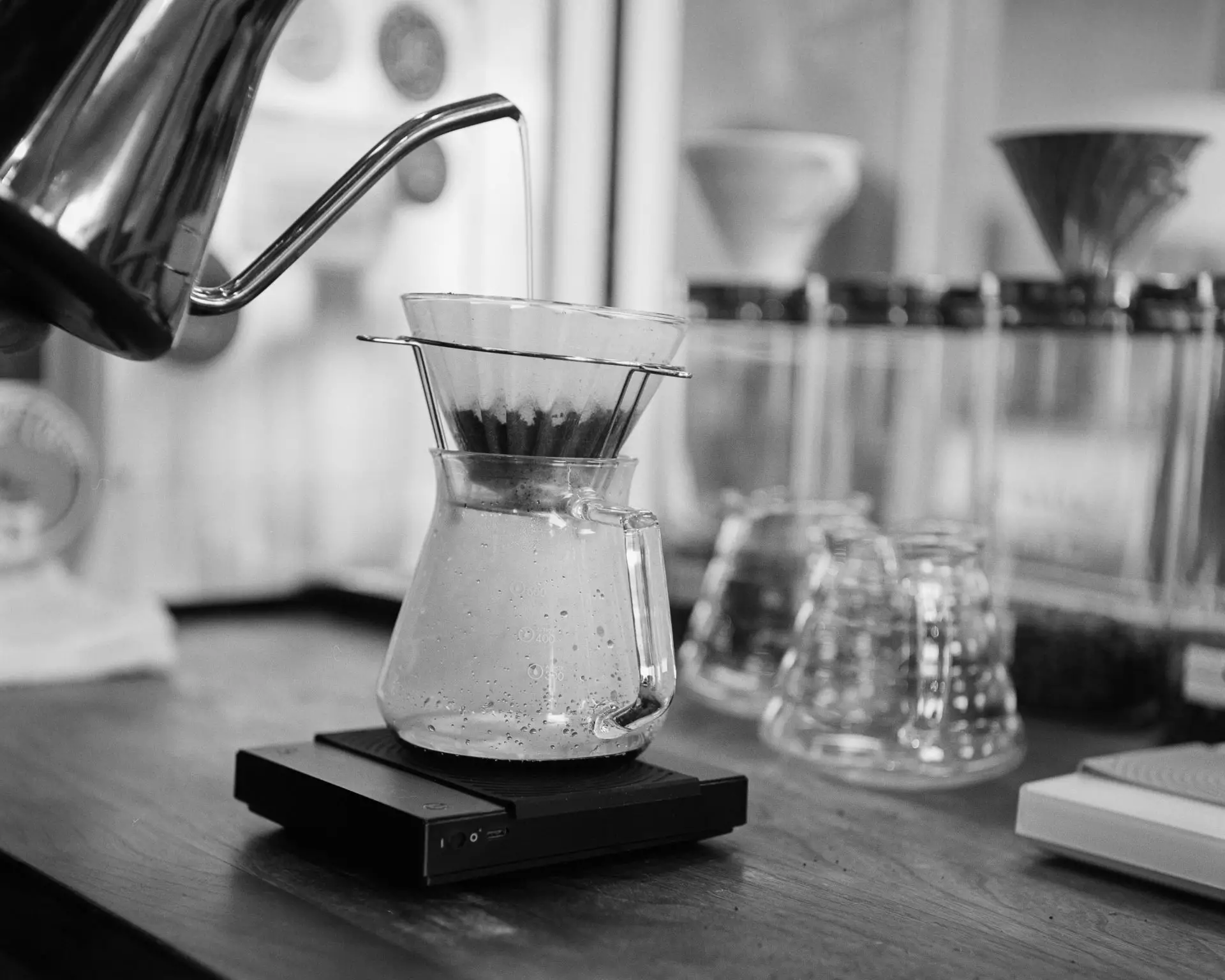
Moving on to immersion-style brewing, this is how I make coffee on my lazy days. I actually picked up my first French press after my (now 1.5 year old) son was born. As it turns out, while coffee is mandatory for the mornings after being up late into the wee hours of the night, you just don’t want to stand there for five minutes gently pouring coffee in little circles in order to get your sustenance…thus, the French press was a mandatory purchase.
Grinding moderately coarser than you would for the puristic pour-over, it’s hard to make a “bad” cup of coffee with a French Press. You can guesstimate your ratios/temperature and leave it brewing for any given amount of time 5-10ish minutes, plunge, and get a good (given, less nuanced than a pour-over) cup of coffee. For the coffee geek, the pour-over is always the way to go; you get a cleaner and more complexly flavored cup of coffee with undertones you lose in other processes, but the French Press and other immersion styles of brewing have their own advantages. Aside from being nearly foolproof, some people do prefer the characteristics of coffee from a French Press.
It makes for what I would call a more traditional tasting, full-bodied cup of coffee, albeit with the caveat that at the bottom of the cup will be some sediment (so pour out that last sip). I compare immersion style brewing most easily with stand developing film. Don’t know what EI you rated your film at? Stand develop it…Not sure how old this roll of film is? Stand develop it. Want to develop different films in the same tank at the same time? Stand develop it. I recently shot some live music for the first time on Tri-x 400 rated at EI 3200 and also some Delta 3200 rated at EI 3200 and semi-stand developed them both in Rodinal (1:100) for an hour and I am now a big believer in this process. Check out the photos on my website here, if you would like to see the results for yourself.
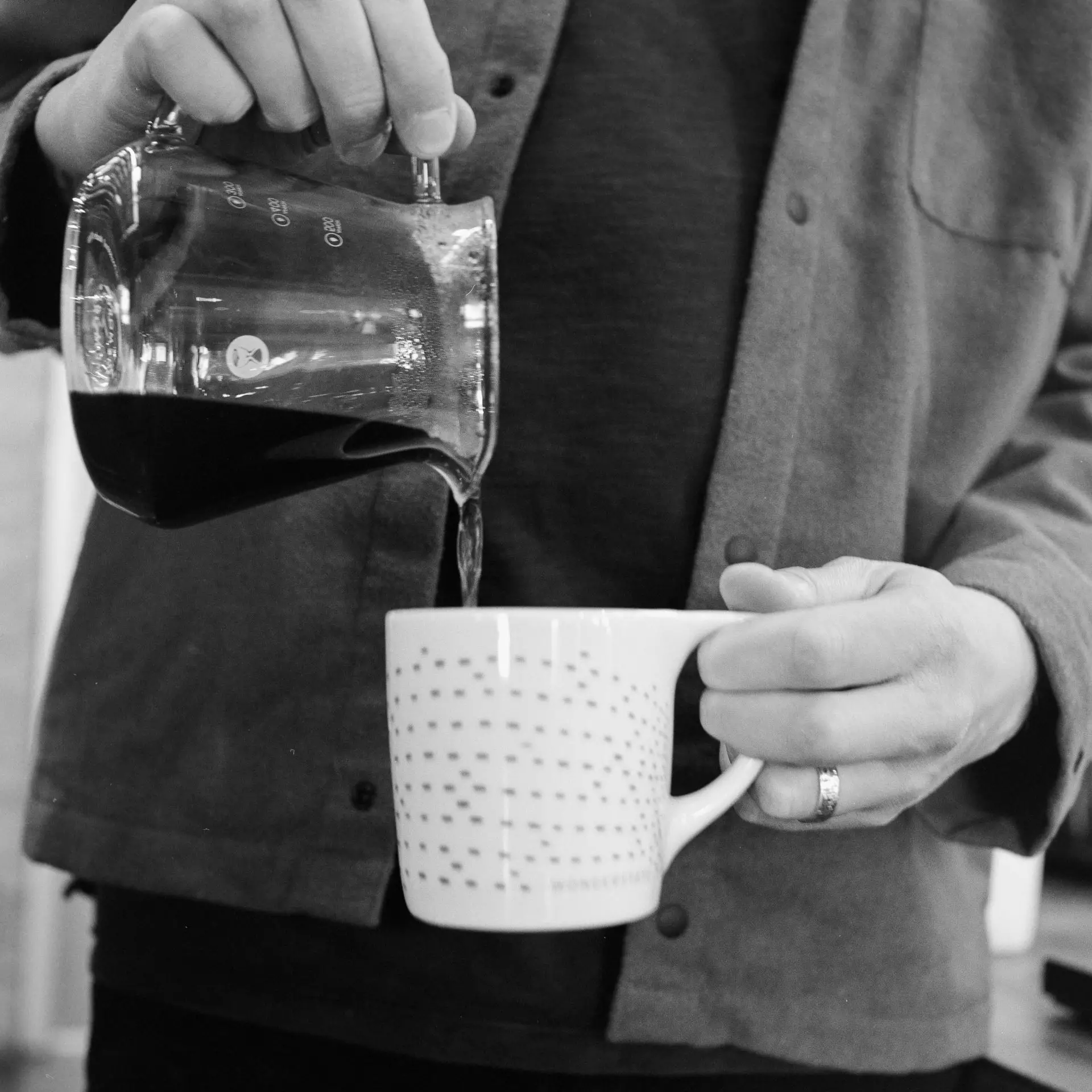
Final Thoughts & Some Recommendations
I like my coffee like I like my film…black (and white).
Jokes aside, there are a few other considerations I have neglected to mention so far. Regardless of how you plan to manually brew your coffee, a decent quality burr grinder is a must. I personally use the budget-minded consumer model Baratza Encore. It is sort of like the Canon AE-1 or Pentax K1000 of coffee grinders. It may seem like a large pill to swallow at first at around $150 but if you intend to brew at home for the long run, it’s the most valuable investment you can make second only to a temperature-controlled, electric gooseneck kettle. The gooseneck is technically only relevant to the percolation style brewing where you need to maintain consistent water dispersion density through your pour but I still use mine for my French press as well so I can keep track of the time brewing as well as the temperature of the water.
My kettle of choice is made by a company called Fellow, but there are cheaper options on amazon that can be had for less, and that leftover money can be spent on film! Third, a cheap kitchen scale is helpful for weighing out your beans per gram and also weighing out the correct amount of water as you are pouring/brewing. Other than that, it’s just paper filters and your brewing vessel of choice!
One last thing of importance is to only grind the amount of beans you are using for your brewing session so don’t go and buy a bag of whole beans just to grind the whole bag in one go. You want to keep that good stuff as fresh as possible! Also worth noting, I try not to buy or use coffee over a month old as it just starts to lose some of its flavors making for a less enjoyable cup of bean juice. 1:16 is typically my ratio for a Pour Over while a French Press I will opt for 1:15 most of the time. but this is something that can be experimented with so do let me know in the comments if you give this a try or have any other coffee-related questions.
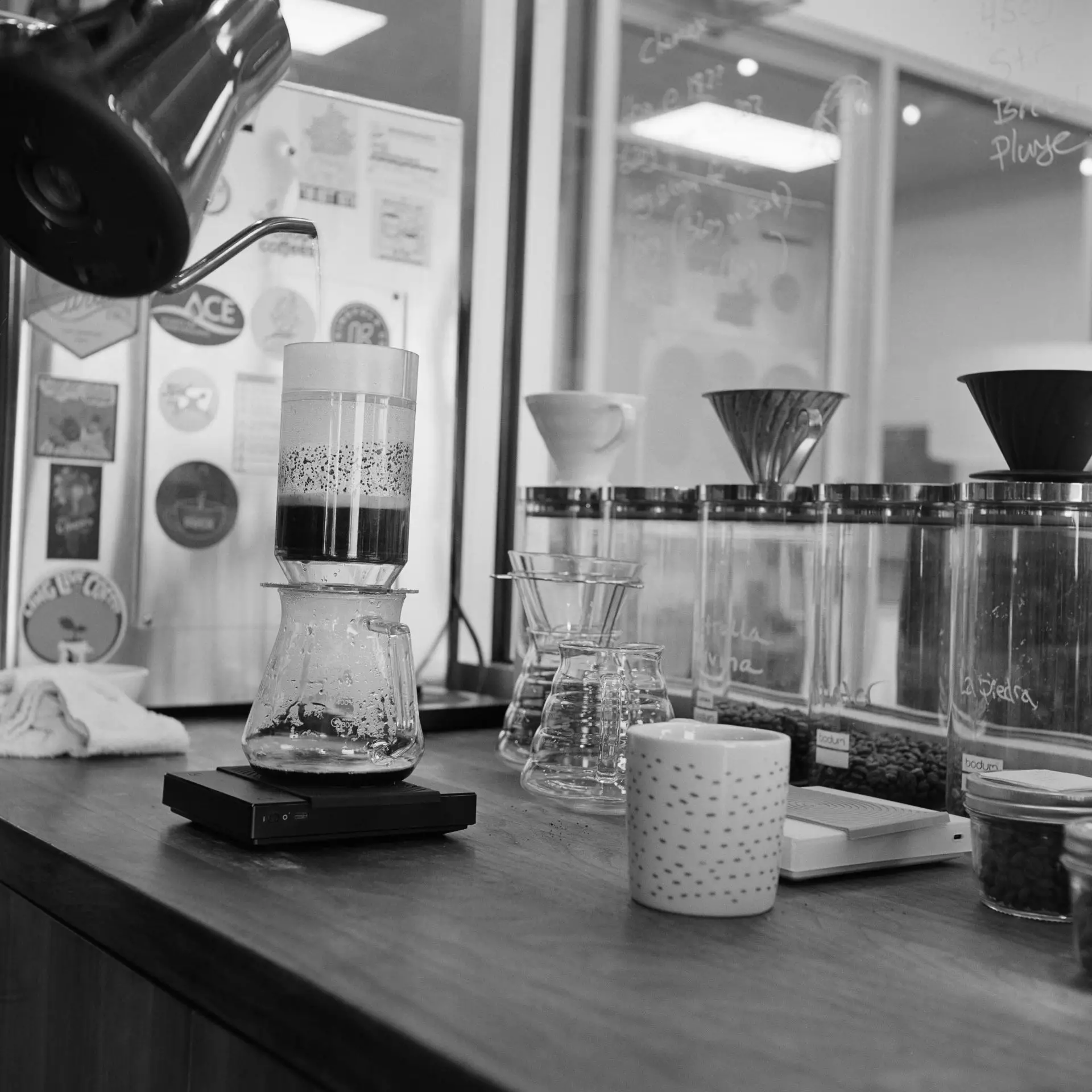
The intent of this article is to celebrate and examine just how similar this process is to one that’s near and dear to the film community’s hearts and in no way a promotion of the somewhat cliche idea that good coffee and pretentiousness need to go hand in hand. There’s something special and tangible about taking the tech out and manually orchestrating every step of the process to achieve a given result whether it be hanging a roll of film to dry or staring out your window on a winter morning and taking that first sip. There’s not much I could say about film developing equipment that isn’t already in the hive mind of this site so I will just conclude by saying, developing color film is like brewing tea…most of the time, just not for me.
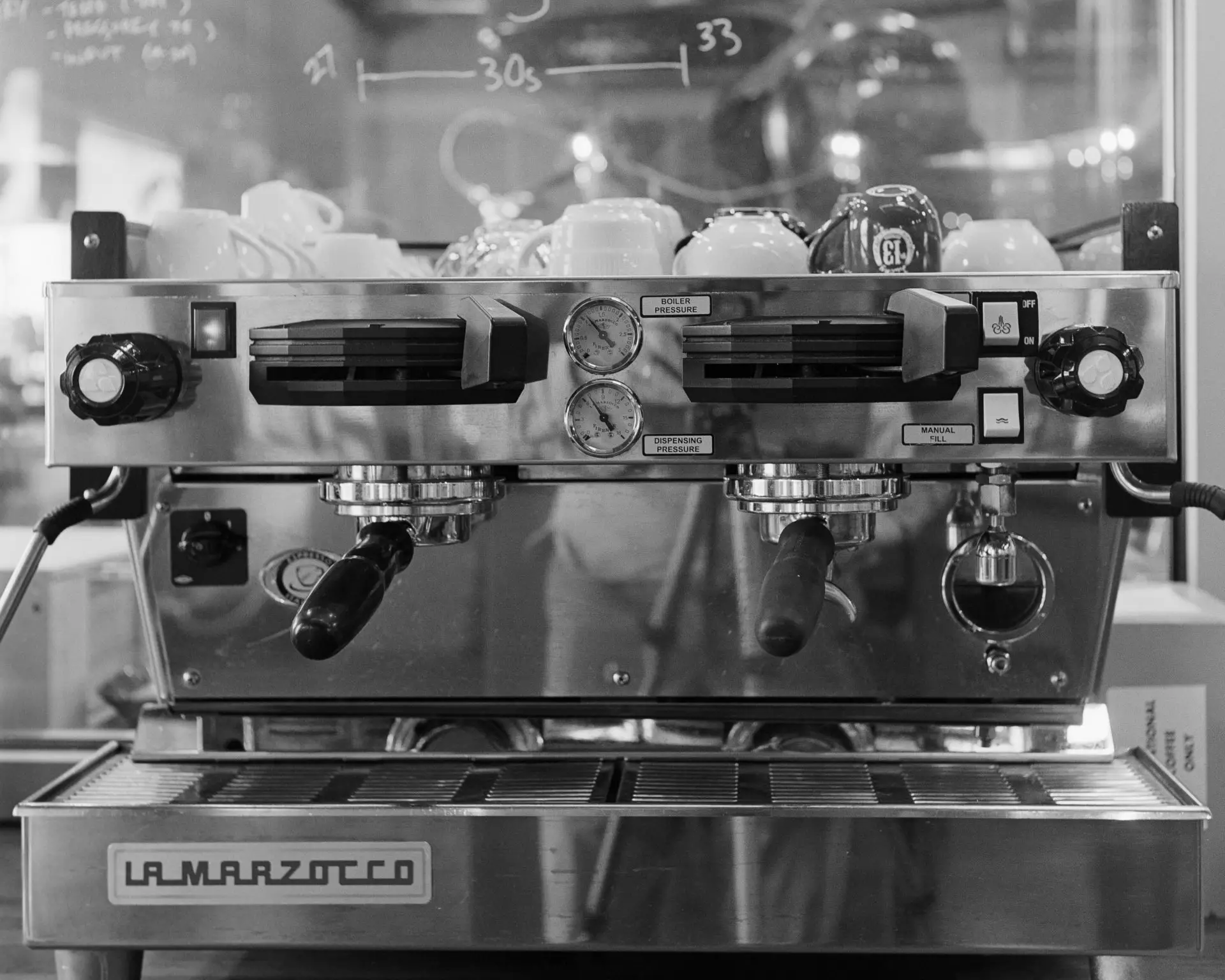
Thanks as always to Hamish, this is my second article (first here) on 35mmc and I really appreciate this amazing platform. I hope you enjoyed some of my philosophical ramblings/coffee knowledge and hopefully I might have inspired someone to give manual coffee brewing at home a try! It’s not any more intimidating than developing film and it feels good to be a part of the process from start to finish. Happy sipping and shooting! One last shout out to my favorite barista Jared Dennison and Wonderstate Coffee for letting me shoot some photos around their beautiful facility and if anyone is interested, order some delicious coffee from them here (not an affiliate link). I am happy to recommend my favorites!
To follow my photography, visit codyallenphoto.com
Share this post:
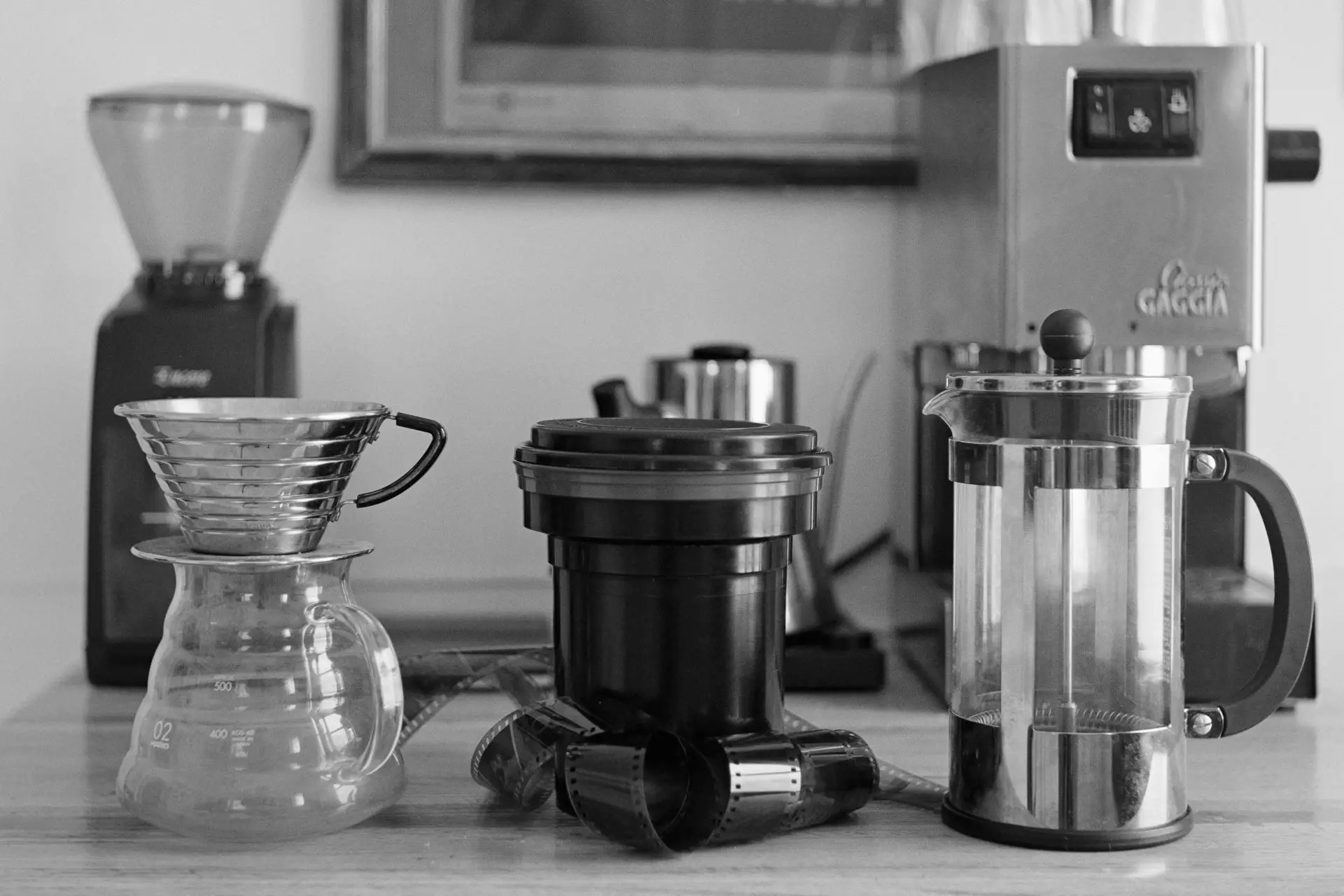








Comments
Kevin on A Tale of Two Processes – Quality Coffee and Film Photography – by Cody Allen
Comment posted: 08/02/2022
Comment posted: 08/02/2022
Ray on A Tale of Two Processes – Quality Coffee and Film Photography – by Cody Allen
Comment posted: 08/02/2022
Actually, that is what I thought this article would be about : ) some wisdom on the different developing film using various coffee concoctions. If you’re not adverse to “wasting” coffee, give it a go and let us know.
An entertaining article nevertheless, thanks.
Comment posted: 08/02/2022
Comment posted: 08/02/2022
Comment posted: 08/02/2022
Comment posted: 08/02/2022
Comment posted: 08/02/2022
Martin on A Tale of Two Processes – Quality Coffee and Film Photography – by Cody Allen
Comment posted: 08/02/2022
Comment posted: 08/02/2022
Lee on A Tale of Two Processes – Quality Coffee and Film Photography – by Cody Allen
Comment posted: 08/02/2022
Comment posted: 08/02/2022
Comment posted: 08/02/2022
Comment posted: 08/02/2022
Comment posted: 08/02/2022
Comment posted: 08/02/2022
Doug Anderson on A Tale of Two Processes – Quality Coffee and Film Photography – by Cody Allen
Comment posted: 08/02/2022
Comment posted: 08/02/2022
Doug Anderson on A Tale of Two Processes – Quality Coffee and Film Photography – by Cody Allen
Comment posted: 08/02/2022
Comment posted: 08/02/2022
Philip Ahlquist on A Tale of Two Processes – Quality Coffee and Film Photography – by Cody Allen
Comment posted: 08/02/2022
I fall squarely into the category of stand-developing and brewing with a french press (or cafetière as we know them here), and I like the results of both. Weighing out precise gram measurements and using timers is strictly reserved for brewing tea or making cyanotypes. Often at the same time, but not yet in the same container!
Comment posted: 08/02/2022
shawn granton on A Tale of Two Processes – Quality Coffee and Film Photography – by Cody Allen
Comment posted: 10/02/2022
As for coffee, if you don't mind hand-grinding, you can get less expensive burr grinders than the Baratza Encore. I've used both Hario and Porlex offerings, and those run from about $40-70. Snow Peak makes one for about $90 and can be found at REI. GSI also has one, but they tend to break.
I typically use an espresso machine for my home coffee, but when I'm feeling up for it, I bring out the moka pot. It's definitely not the way to get delicate flavors out of some roasts, but I like it.
Comment posted: 10/02/2022
Comment posted: 10/02/2022
Jay Dann Walker in Melbourne on A Tale of Two Processes – Quality Coffee and Film Photography – by Cody Allen
Comment posted: 08/03/2022
My blend is one I have 'evolved' over the years, which is very much in the Eastern European mood - a mix of mocha with a dash of espresso for that 'kick' I need in the mornings to get my brain into gear and the rest of me functioning. I buy my beans in small lots, roasted fresh every Monday morning so I go that same day and get just enough to last me for the week.
Sadly, in the last year the great grandson of the original founder of the business decided to give it all away (at age almost 90!) and sold out to new owners, who are keen to move coffee but have no understanding of the caffeine culture and regrettably, few social skills and basically the personalities of automatons. Prices have gone up and the quality coffee roasts they once kept in stock have now vanished, the excuse given is that they didn't sell as much as the more popular varieties - very ordinary Robusta and Arabica blends with artificial high-alcohol liqueurs, to which I can say only one thing - puke!)- and nowadays their new buyers are now mostly cashed-up Asian students in the city center. Okay, so time changes and everything comes to pass, but we 'traditionalists' (or Caffeine Duffers as I like to call myself) are being left sitting by the wayside in favour of the fickle faddist buyers who will come and go all to quickly to the next fad. Which is fine, I'm entirely happy to take my business elsewhere, if I could find anywhere that sells coffee of a quality I'm used to. But it's all vanishing entirely too quickly...
Having written all this, I feel like a dinosaur. Much as I am in my photography. Here, like as in my coffee, I like the tried and true - Nikons since the '80s, these days digital, full frame with a 28mm which I find suits my way of looking at the world and at life in the best way.
Enough of all this. Cody, many thanks for having thrown a massive spanner into the photo-works by bringing up a topic that relates well to all of us, but is quickly changing, much like film is vanishing in the wake of digital. We need these mind-benders to shock us back into the reality of thing as they are. As I see it, long may film live on but let's not throw out the baby with the bathwater and ignore the realities of the changes that are happening all around us - and let's enjoy what we have while we still have it, whether film or coffee.
Am I inconsistent in all this? If I am, then so I am. But I did enjoy your laterally-thought-out essay. Kudos to you.
From Dann in Melbourne
Comment posted: 08/03/2022